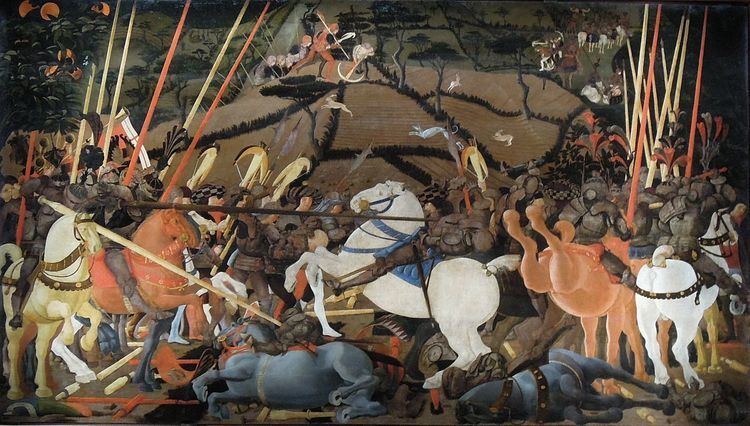Date 1 June 1432 | ||
 | ||
400 cavalry taken prisoner 600 cavalry and unknown infantry taken prisoner Result Florentine victory (disputed) Similar Battle of Maclodio, Battle of Delebio, Battle of Sant'Egidio, Battle of Fornovo, Battle of Marciano | ||
Uccello the battle of san romano renaissance reformation in europe art history khan academy
The Battle of San Romano was fought on June 1, 1432, some 30 miles outside Florence, between the troops of Florence, commanded by Niccolò da Tolentino, and Siena, under Francesco Piccinino. The outcome is generally considered favourable to the Florentines, but in the Sienese chronicles it was considered a victory. As the 1430s began Florence had found itself in conflict with the rival city state of Lucca, and her allies, Siena and Milan.
Contents
- Uccello the battle of san romano renaissance reformation in europe art history khan academy
- Paintings
- References
The Florentine deployed about 4,000 horse and 2,000 infantry. The clash, which lasted for some six or seven hours, consisted of a series of heavy cavalry fights. It was decided by the intervention of a second cavalry corps commanded by Micheletto Attendolo.
Paintings
The battle was depicted in three large paintings by the Italian Renaissance artist, Paolo Uccello: The Battle of San Romano. Today the three panels are separated and located in galleries in London, Paris, and Florence:
